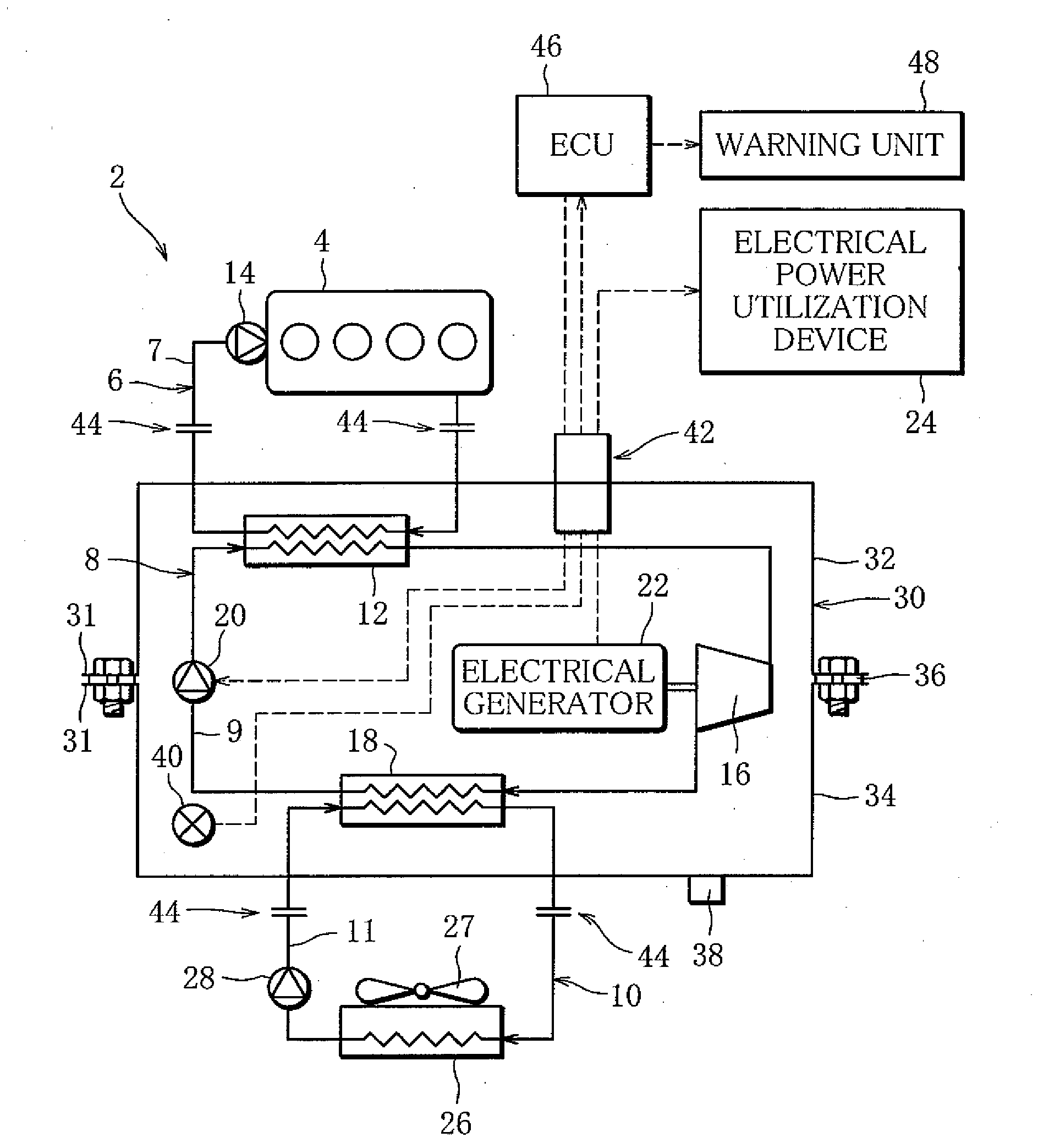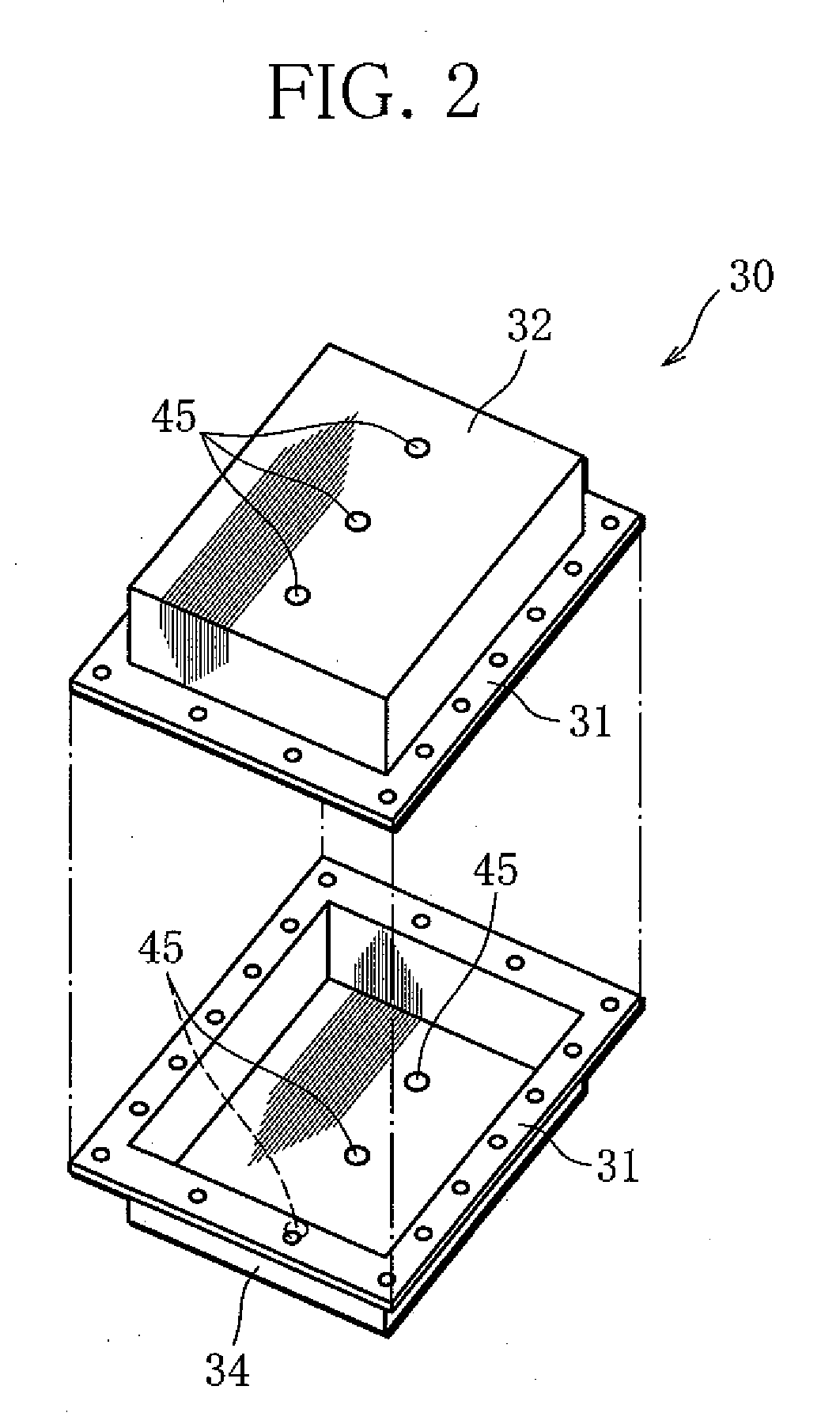Waste Heat Utilization Device for Internal Combustion Engine
a technology for internal combustion engines and waste heat, which is applied in the direction of machines/engines, mechanical equipment, transportation and packaging, etc., can solve the problems of insufficient cooling of the engine, high gwp (global warming potential), and possible ignition or worst, explosion of alternative cfcs, etc., and achieve the effect of more safe and proper operation
- Summary
- Abstract
- Description
- Claims
- Application Information
AI Technical Summary
Benefits of technology
Problems solved by technology
Method used
Image
Examples
first embodiment
[0037]First, a first embodiment will be described.
[0038]FIG. 1 is a schematic diagram showing a waste heat utilization device 2 for an internal combustion engine according to a first embodiment. The waste heat utilization device 2 comprises a first cooling water circuit 6 through which cooling water circulates, thereby cooling an automotive engine (internal combustion engine) 4, for example, a Rankine cycle circuit 8 (hereinafter referred to as “cycle 8”) through which a combustible hydrocarbon-based (HC) refrigerant circulates, thereby recovering waste heat produced by the engine 4, and a second cooling water circuit 10 through which cooling water circulates, thereby cooling the refrigerant.
[0039]The first cooling water circuit 6 constitutes a closed circuit including an evaporator 12 and a water pump 14 serially arranged in a circulation line 7 extending from the engine 4, where driving the water pump 14 causes the cooling water to circulate.
[0040]The evaporator 12 is a heat excha...
second embodiment
[0068]Next, a second embodiment will be described.
[0069]FIG. 4 shows a waste heat utilization device 50 according to a second embodiment. The waste heat utilization device 50 constitutes a third cooling water circuit 52 through cooling water circulates passing through the radiator 26 and the engine 4, where a three-way valve 54, a constituent of the third cooling water circuit 52, undergoes valve position control. In the other respects, this embodiment is similar to the first embodiment. Thus, the description will be given mainly of this difference.
[0070]The third cooling water circuit 52 is provided outside the casing 30, and constitutes a closed circuit including the three-way valve 54, the radiator 26, a check valve 56 and the water pump 14 serially arranged in a circulation line 53 extending from the engine 4, where driving the water pump 14 causes the cooling water to circulate passing through the engine 4 and then through the radiator 26. The section of the circulation line 53...
PUM
 Login to View More
Login to View More Abstract
Description
Claims
Application Information
 Login to View More
Login to View More - R&D
- Intellectual Property
- Life Sciences
- Materials
- Tech Scout
- Unparalleled Data Quality
- Higher Quality Content
- 60% Fewer Hallucinations
Browse by: Latest US Patents, China's latest patents, Technical Efficacy Thesaurus, Application Domain, Technology Topic, Popular Technical Reports.
© 2025 PatSnap. All rights reserved.Legal|Privacy policy|Modern Slavery Act Transparency Statement|Sitemap|About US| Contact US: help@patsnap.com



